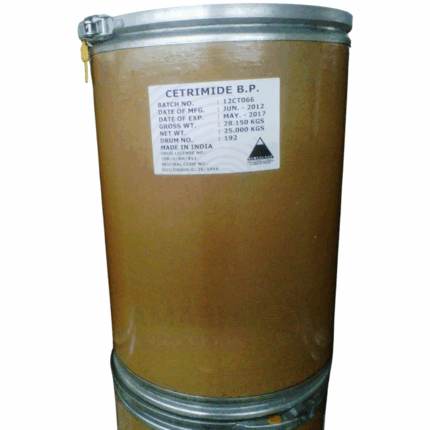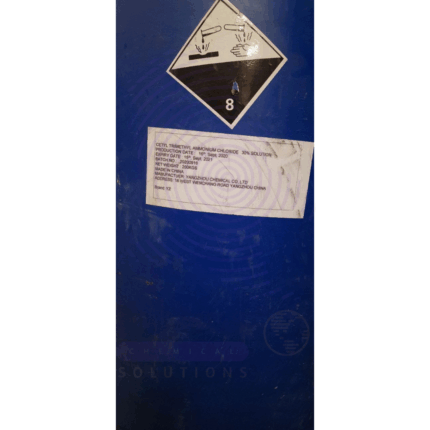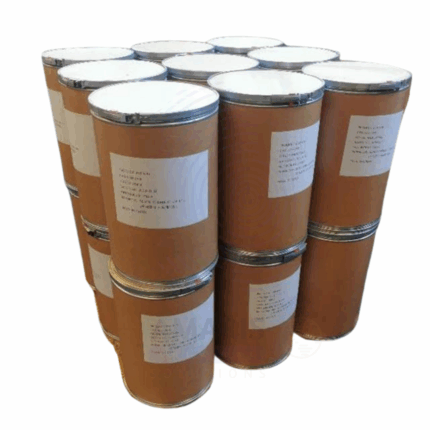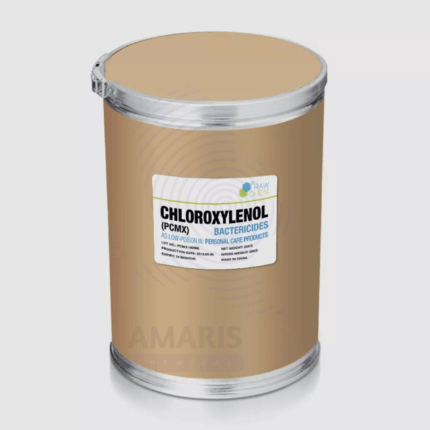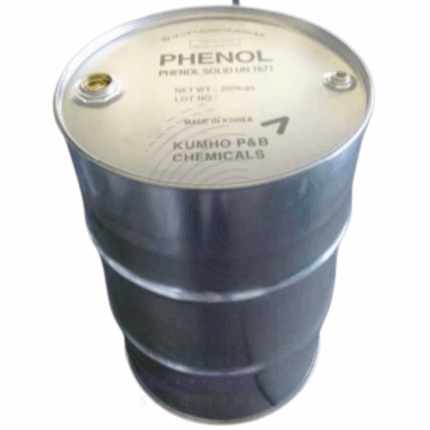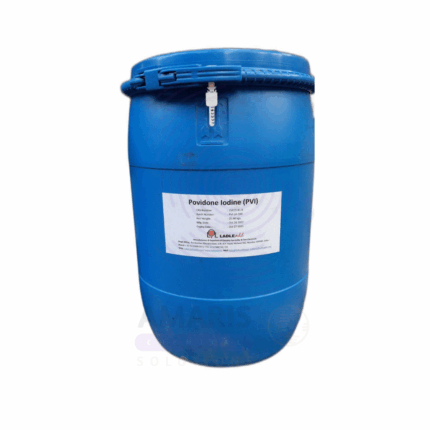
Ammonium Chromate Extra Pure
$ 18.00 Original price was: $ 18.00.$ 17.89Current price is: $ 17.89.
Naphthalene Balls
Whatsapp Order
Napthalene Balls are solid, crystalline balls made primarily of naphthalene, a white, volatile, aromatic hydrocarbon derived from coal tar or petroleum refining. Known for their strong, distinctive odor, naphthalene balls are widely used as moth repellents and deodorizing agents. Due to their sublimation property, they slowly vaporize at room temperature, releasing fumes that are toxic to moths and insects. They find broad applications in household pest control, industrial storage protection, and chemical manufacturing.
Category: Antiseptics and Disinfectants
Tags: Moth Balls, Naphthalene Balls, Pest Repellent, Strong Odor
Description
Table of Contents
Toggle
Naphthalene Balls
Primary Uses
- Moth and Insect Repellent
- Used to protect clothing, textiles, and stored fabrics from moth damage.
- Commonly placed in wardrobes, closets, and storage chests to prevent insect infestation.
- Deodorizing Agent
- Used in toilets, bathrooms, and garbage bins to mask unpleasant odors.
- Helps in maintaining a fresh and clean environment by neutralizing foul smells.
- Pest Control in Storage Facilities
- Used in grain storage, warehouses, and shipping containers to deter pests and insects.
- Prevents contamination and damage of stored goods.
Secondary Uses
- Chemical Intermediate
- Used as a raw material in the production of phthalic anhydride, dyes, plastics, and resins.
- Laboratory Reagent
- Employed in organic synthesis and analytical laboratories as a reagent or solvent.
- Air Freshener
- Utilized in small quantities in some air freshening products for strong aromatic scent.
- Disinfectant and Antifungal Agent
- Occasionally used for its mild antifungal properties in certain niche applications.
KEY PRODUCT FEATURES
1. Basic Identification Attributes
- Chemical Name (IUPAC): Naphthalene
- Common/Trade Name: Napthalene Balls, Moth Balls
- CAS Number: 91-20-3
- HS Code: 2707.90.90
- Synonyms: Moth crystals; Moth flakes; Naphthalin
2. Physical & Chemical Properties
- Physical State: Solid balls or flakes
- Color & Odor: White crystalline solid; strong characteristic aromatic odor
- Melting Point: 80.2°C
- Boiling Point: 218°C
- Solubility: Slightly soluble in water; soluble in organic solvents (benzene, ether)
- Vapor Pressure: Moderate sublimation at room temperature
3. Safety & Hazard Attributes
- GHS Classification: Flammable solid; acute toxicity (oral) category 4; suspected carcinogen
- Toxicity: Harmful if swallowed or inhaled; prolonged exposure can cause hemolytic anemia
- Exposure Limits: OSHA PEL 10 ppm (as vapor)
4. Storage & Handling Attributes
- Storage Conditions: Store in cool, dry, well-ventilated area away from ignition sources
- Container Type: Supplied in airtight plastic or metal containers to prevent sublimation loss
- Shelf Life: Indefinite if stored properly
- Handling Precautions: Avoid inhalation and prolonged skin contact; use gloves and mask
5. Regulatory & Compliance Attributes
- Complies with chemical safety regulations (OSHA, REACH, EPA)
- Listed in major chemical inventories worldwide
6. Environmental & Health Impact
- Biodegradability: Not readily biodegradable
- Ecotoxicity: Toxic to aquatic life; avoid environmental release
- Bioaccumulation: Potential to bioaccumulate in aquatic organisms
- Carcinogenicity/Mutagenicity: Classified as possibly carcinogenic to humans (IARC Group 2B)
SAFETY HANDLING PRECAUTIONS
Safety Handling Precautions
- PPE Required: Gloves, respiratory protection, and eye protection recommended
- Handling Guidelines: Use in well-ventilated areas; avoid inhalation of dust or fumes
- Storage Measures: Keep containers tightly closed and stored away from incompatible materials
First Aid Measures
- Inhalation: Move to fresh air; seek medical attention if symptoms develop
- Skin Contact: Wash thoroughly with soap and water
- Eye Contact: Rinse with plenty of water for 15 minutes; seek medical attention if irritation persists
- Ingestion: Do not induce vomiting; seek immediate medical attention
Firefighting Measures
- Fire Hazards: Highly flammable solid; emits toxic fumes when burning
- Extinguishing Media: Use dry chemical, foam, or CO₂ extinguishers
- Special Precautions: Wear self-contained breathing apparatus and protective gear
- Hazardous Combustion Products: Carbon monoxide, carbon dioxide, and toxic hydrocarbons
Related products
Cetrimide Powder
Cetrimide Powder is a high-purity quaternary ammonium compound widely used for its antiseptic, disinfectant, and surfactant properties. It is a cationic surfactant derived from cetyltrimethylammonium bromide and appears as a white to off-white crystalline powder with a slight characteristic odor. Known for its excellent antimicrobial efficacy against bacteria and fungi, cetrimide is frequently incorporated in pharmaceutical, personal care, and industrial formulations. It acts as a bactericidal agent, detergent, and emulsifier, providing effective cleaning and disinfecting action.
Cetyl Trimethyl Ammonium Chloride
Cetyl Trimethyl Ammonium Chloride (CTAC) is a cationic surfactant and quaternary ammonium compound characterized by a long hydrophobic cetyl (C16) alkyl chain and a positively charged ammonium head group. It appears as a white to pale yellow powder or flakes, soluble in water, and exhibits strong surface-active properties. CTAC is widely used in cosmetics, personal care, and industrial applications for its excellent conditioning, antistatic, emulsifying, and disinfectant capabilities. It functions primarily as a fabric softener, hair conditioner, and antimicrobial agent.
Chlorhexidine Digluconate
Chlorhexidine Digluconate is a concentrated aqueous solution of chlorhexidine salt (digluconate form), a potent broad-spectrum antimicrobial agent. It is a clear to slightly yellow viscous liquid with a mild characteristic odor. This antiseptic and disinfectant is widely used in medical, personal care, and industrial applications for its ability to effectively kill bacteria, fungi, and some viruses by disrupting microbial cell membranes. Chlorhexidine Digluconate is valued for its residual antimicrobial activity, low toxicity, and compatibility with various formulations.
Chlorobutanol BP
Chlorobutanol BP (also known as 1,1,1-Trichloro-2-methyl-2-propanol) is a white crystalline solid or powder, with a slight camphor-like odor and a bitter taste. It is a multifunctional preservative, anesthetic, and antimicrobial agent commonly used in pharmaceutical, cosmetic, and personal care products. Chlorobutanol exhibits bacteriostatic and fungistatic properties, making it effective in preventing microbial contamination in aqueous formulations. It also possesses mild local anesthetic effects, frequently used in ophthalmic and injectable preparations as a preservative and stabilizer.
Chloroxylenol BP
Chloroxylenol BP is a pale yellow to colorless crystalline solid with a mild phenolic odor. It is a broad-spectrum antimicrobial agent widely used for its bactericidal, fungicidal, and antiviral properties. Chemically known as 4-chloro-3,5-dimethylphenol, Chloroxylenol acts by disrupting microbial cell membranes and inhibiting enzyme systems, making it effective against many gram-positive and some gram-negative bacteria, fungi, and viruses. Its relatively low toxicity and skin irritation profile compared to other phenols have made it a preferred active ingredient in antiseptics, disinfectants, and preservative formulations across pharmaceutical, personal care, household, and industrial applications.
Phenol Ice Crystals
Phenol Ice Crystals, also known as carbolic acid in solid form, are crystalline compounds of phenol with a melting point near room temperature, giving them an “ice-like” appearance. Phenol is a aromatic organic compound widely used as a precursor in chemical synthesis, disinfectants, and pharmaceuticals. It exhibits antiseptic, antiseptic, and solvent properties. Due to its toxicity and corrosiveness, phenol requires careful handling.
Povidone Iodide BP
Povidone Iodide BP is a water-soluble complex of iodine with the synthetic polymer polyvinylpyrrolidone (PVP). It acts as a broad-spectrum antiseptic effective against bacteria, fungi, viruses, and protozoa. Widely used in medical, pharmaceutical, and veterinary fields, Povidone Iodine provides sustained iodine release, minimizing irritation while offering rapid antimicrobial action. It is essential for wound care, surgical preparation, and infection control.
Santophene
Santophene (4-chloro-2-benzylphenol) is a chlorinated phenolic compound used primarily as a biocide and preservative in various industrial applications. It exhibits strong antimicrobial properties, effectively controlling the growth of bacteria, fungi, and algae. This compound is widely applied in coatings, paints, wood preservation, and water treatment to protect materials from microbial degradation and extend their service life.


 Preservatives(food)
Preservatives(food) Flavor Enhancers
Flavor Enhancers Acidulants
Acidulants Sweeteners
Sweeteners Antioxidants
Antioxidants Colorants(food)
Colorants(food) Nutraceutical Ingredients (food)
Nutraceutical Ingredients (food) Nutrient Supplements
Nutrient Supplements Emulsifiers
Emulsifiers
 Collectors
Collectors Dust Suppressants
Dust Suppressants Explosives and Blasting Agents
Explosives and Blasting Agents Flocculants and Coagulants
Flocculants and Coagulants Frothers
Frothers Leaching Agents
Leaching Agents pH Modifiers
pH Modifiers Precious Metal Extraction Agents
Precious Metal Extraction Agents
 Antioxidants(plastic)
Antioxidants(plastic) Colorants (Pigments, Dyes)
Colorants (Pigments, Dyes) Fillers and Reinforcements
Fillers and Reinforcements Flame Retardants
Flame Retardants Monomers
Monomers Plasticizers
Plasticizers Polymerization Initiators
Polymerization Initiators Stabilizers (UV, Heat)
Stabilizers (UV, Heat)
 Antifoaming Agents
Antifoaming Agents Chelating Agents
Chelating Agents Coagulants and Flocculants
Coagulants and Flocculants Corrosion Inhibitors
Corrosion Inhibitors Disinfectants and Biocides
Disinfectants and Biocides Oxidizing Agents
Oxidizing Agents pH Adjusters
pH Adjusters Scale Inhibitors( water)
Scale Inhibitors( water)
 Antioxidants(cosmetic)
Antioxidants(cosmetic) Emollients
Emollients Fragrances and Essential Oils
Fragrances and Essential Oils Humectants
Humectants Preservatives
Preservatives Surfactants(cosmetic)
Surfactants(cosmetic) Thickeners
Thickeners UV Filters
UV Filters
 Fertilizers
Fertilizers Soil Conditioners
Soil Conditioners Plant Growth Regulators
Plant Growth Regulators Animal Feed Additives
Animal Feed Additives Biostimulants
Biostimulants Pesticides (Herbicides, Insecticides, Fungicides)
Pesticides (Herbicides, Insecticides, Fungicides)
 Active Pharmaceutical Ingredients (APIs)
Active Pharmaceutical Ingredients (APIs) Excipients
Excipients Solvents(pharmaceutical)
Solvents(pharmaceutical) Antibiotics
Antibiotics Antiseptics and Disinfectants
Antiseptics and Disinfectants Vaccine Adjuvants
Vaccine Adjuvants Nutraceutical Ingredients (pharmaceutical)
Nutraceutical Ingredients (pharmaceutical) Analgesics & Antipyretics
Analgesics & Antipyretics
 Analytical Reagents
Analytical Reagents Solvents(lab)
Solvents(lab) Chromatography Chemicals
Chromatography Chemicals Spectroscopy Reagents
Spectroscopy Reagents microbiology-and-cell-culture-reagents
microbiology-and-cell-culture-reagents Molecular Biology Reagents
Molecular Biology Reagents Biochemical Reagents
Biochemical Reagents Inorganic and Organic Standards
Inorganic and Organic Standards Laboratory Safety Chemicals
Laboratory Safety Chemicals Specialty Laboratory Chemicals(Special Laboratory Equipment)
Specialty Laboratory Chemicals(Special Laboratory Equipment)
 Demulsifiers
Demulsifiers Hydraulic Fracturing Fluids
Hydraulic Fracturing Fluids Scale Inhibitors(oil)
Scale Inhibitors(oil) Surfactants(oil)
Surfactants(oil) Drilling Fluids
Drilling Fluids
 Dyes and Pigments
Dyes and Pigments Bleaching Agents
Bleaching Agents Softening Agents
Softening Agents Finishing Agents
Finishing Agents Antistatic Agents
Antistatic Agents
 Admixtures
Admixtures Waterproofing Agents
Waterproofing Agents Sealants and Adhesives
Sealants and Adhesives Curing Compounds
Curing Compounds Concrete Repair Chemicals
Concrete Repair Chemicals Anti-Corrosion Coatings
Anti-Corrosion Coatings
 Surfactants(cleaning)
Surfactants(cleaning) Builders
Builders Enzymes
Enzymes Solvents (Cleaning)
Solvents (Cleaning) Fragrances
Fragrances
 Electronic Chemicals
Electronic Chemicals Catalysts
Catalysts Lubricants
Lubricants Photographic Chemicals
Photographic Chemicals Refrigerants
Refrigerants Automotive chemicals
Automotive chemicals Pyrotechnic Chemicals
Pyrotechnic Chemicals
 Biodegradable Surfactants
Biodegradable Surfactants Bio-based Solvents
Bio-based Solvents Renewable Polymers
Renewable Polymers Carbon Capture Chemicals
Carbon Capture Chemicals Wastewater Treatment Chemicals
Wastewater Treatment Chemicals
 Pigments
Pigments Solvents(paint)
Solvents(paint) Specialty Coatings
Specialty Coatings Binders/Resins
Binders/Resins Additives
Additives Driers
Driers Anti-Corrosion Agents
Anti-Corrosion Agents Functional Coatings
Functional Coatings Application-Specific Coatings
Application-Specific Coatings
 Fresh Herbs
Fresh Herbs Ground Spices
Ground Spices Whole Spices
Whole Spices Spice Blends
Spice Blends Dried Herbs
Dried Herbs
 Leavening Agents
Leavening Agents Dough Conditioners
Dough Conditioners Flour Treatments
Flour Treatments Fat Replacers
Fat Replacers Decoratives
Decoratives Preservatives(baking)
Preservatives(baking)
 Plasticizers & Softeners
Plasticizers & Softeners Reinforcing Agents
Reinforcing Agents Adhesion Promoters
Adhesion Promoters Vulcanizing Agents
Vulcanizing Agents Antidegradants
Antidegradants Blowing Agents
Blowing Agents Fillers & Extenders
Fillers & Extenders Accelerators & Retarders
Accelerators & Retarders


